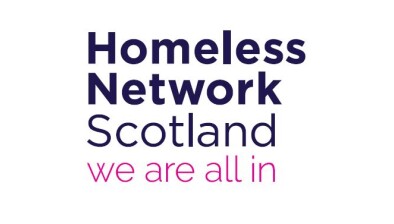Not-so Temporary Accommodation
 Continuing this year’s Homeless Spotlight feature, Shelter Scotland’s senior policy officer, Emma Dore, takes a detailed look at the charity’s report into the use of temporary accommodation in Scotland which revealed that Scottish children spent nearly one million days homeless during 2015.
Continuing this year’s Homeless Spotlight feature, Shelter Scotland’s senior policy officer, Emma Dore, takes a detailed look at the charity’s report into the use of temporary accommodation in Scotland which revealed that Scottish children spent nearly one million days homeless during 2015.

The provision of temporary accommodation is a marker of Scotland’s world-recognised progressive homelessness legislation from 2012. As a country we should be proud that when most people hit crisis and lose their home they have a right to a roof over their head in the short-term. I for one am grateful to know that, should I ever have the misfortune to lose my home, this important safety net would be in place.
The latest Scottish Government data shows that 10,567 households are in temporary accommodation in Scotland, including 4,923 children.
You are entitled to temporary accommodation:
However, new research we published recently based on a Freedom of information (FOI) request to local authorities suggests that 1 in 10 households in temporary accommodation will be there for more than one year. Not so temporary. And whilst it is great that those places are available, research has shown that extended time in ‘temp’ can be disruptive and damaging to people’s well-being. Local authorities try their best, but due to limited properties being available, families are often placed at a distance from their communities, support and even children’s schools. Not knowing when or where you will next have somewhere to properly call ‘home’ can take its toll.
On average, last year people in Scotland spent 23 weeks in temporary accommodation - that’s more than five months. In 2014/15, 61% of households who applied to their local authority as homeless spent some time in temporary accommodation overall – an estimated 21,200 households. In total, we estimate that 3.8 million days of temporary accommodation were provided in 2014-15 across Scotland – nearly one million of those days were experienced by children.
Temporary accommodation should be - and in many cases is - a crucial first step away from homelessness for households in a time of crisis. However, temporary accommodation should be just that – temporary. The longer you stay in temporary accommodation, the more impact it will have on your life. We know that children in temporary accommodation miss, on average, 55 days in every school year - equivalent to almost a quarter of the school year.
The types of temporary accommodation you are likely to receive changes dramatically depending on where you are in Scotland. 40% of time spent in ‘temp’ last year was in normal local authority properties, but housing association flats, hostels, private sector leases or bed and breakfasts (B&Bs) are also on the cards. Some people will be moved between several different places whilst they wait for somewhere settled.
Last year 11,105 homeless households spent time in a B&B – more people than stayed in any other type of temporary accommodation. This high number is worrying as B&B’s are the most disruptive form of temporary accommodation, often lacking basic amenities such as cooking facilities. Acknowledging the often low standards in B&B’s, there are welcome restrictions on the use of B&B’s for families with children or pregnant woman. However, we are concerned about the damaging impact that time in these places can have on other vulnerable groups, such as people with mental health problems. On average, people who were placed in a B&B spent just over a month there. For many people this will have been an initial placement before being moved on to another type of temporary accommodation, increasing the disruption and dislocation to their lives.
For a long time, Shelter Scotland has recommend that the Scottish Government develop and support non-statutory guidance on standards in temporary accommodation to ensure that stays in temporary accommodation are positive. Short-term use of B&Bs is necessary in limited situations, but we believe that new rules should be introduced so that the most vulnerable don’t end up places that could further damage their well-being. In addition, commitment must be made to the need for 12,000 affordable homes each year to help reduce long stays in temporary accommodation and to ensure that temporary accommodation can return to its original intention: a temporary stepping stone away from crisis.
Emma Dore is senior policy officer at Shelter Scotland.
For more information, please contact emma_dore@shelter.org.uk.
Keep up to date with the Homeless Spotlight on our website. To share the feature on Twitter please use #HomelessSpotlight or mention @ScotHousingNews.








